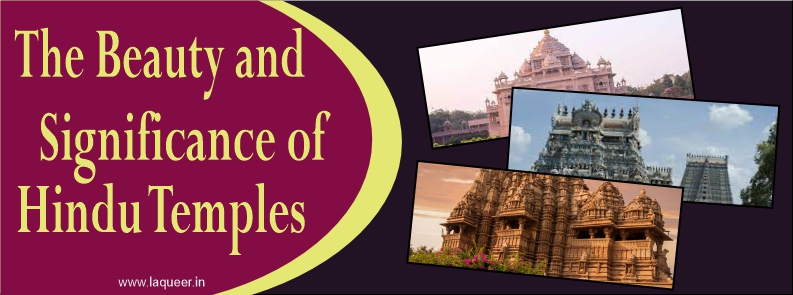
The Beauty and Significance of Indian Hindu Temples
Introduction
Indian Hindu temples are architectural marvels that showcase the rich cultural heritage and religious practices of the Indian subcontinent. These sacred structures hold deep spiritual significance for millions of Hindus and attract visitors from around the world. Combining intricate craftsmanship, vibrant colours, and spiritual symbolism, Indian Hindu temples provide a glimpse into the diverse traditions and beliefs of the Hindu faith. In this article, we will explore the unique features and rituals associated with Indian Hindu temples, shedding light on their cultural, historical, and spiritual significance.
Historical Background and Architecture
The history of Indian Hindu temples dates back thousands of years, with evidence of temple construction found in ancient texts and archaeological remains. Temples were initially built as open-air spaces for worship, but over time, more complex structures were created to house the deities. The architectural style of Indian Hindu temples varies across regions, influenced by local traditions and historical periods.
One of the most iconic architectural features of Indian Hindu temples is the towering spire, known as the “shikhara” or “vimana.” These spires, often adorned with intricate carvings and sculptures, symbolize the connection between the earthly realm and the divine. The entrance to the temple is marked by a gateway called the “gopuram,” which serves as a grand welcome to the devotees.
Temple Layout and Symbolism
Indian Hindu temples typically follow a specific layout known as the Vastu Purusha Mandala, which divides the temple into various sections. The central sanctum, called the “garbhagriha” or “womb chamber,” houses the main deity. This area is considered the most sacred and is accessible only to the priests and a select few.
Surrounding the garbhagriha, there are often multiple halls, corridors, and open spaces. These areas serve as gathering spaces for devotees to participate in religious ceremonies, offer prayers, and seek blessings. The walls and ceilings of the temple are adorned with intricate carvings depicting various mythological scenes and deities, showcasing the artistic excellence of the craftsmen.
Every aspect of an Indian Hindu temple carries symbolic meaning. The temple’s orientation, with the main entrance facing east, is believed to align with the rising sun and symbolizes the awakening of spiritual consciousness. The architectural elements, carvings, and sculptures depict stories from Hindu mythology, conveying moral, philosophical, and spiritual teachings.
Rituals and Festivals
Indian Hindu temples are centres of religious rituals and ceremonies. Daily worship, known as “puja,” is conducted by the priests to honour the deities and seek their blessings. Devotees offer flowers, fruits, and other items as a sign of devotion. The ringing of bells, the burning of incense, and the chanting of hymns create a spiritually charged atmosphere.
Temples also play a significant role in hosting various festivals throughout the year. Festivals such as Diwali, Navaratri, and Maha Shivaratri are celebrated with great enthusiasm and grandeur. These occasions bring communities together, offering an opportunity for devotees to connect with their faith, participate in processions, and witness colourful rituals.
Social and Cultural Significance
Indian Hindu temples hold immense social and cultural importance. They serve as community centers where people gather not only for religious purposes but also for social interactions, weddings, and other celebrations. Temples often have associated educational institutions that teach Vedic scriptures, philosophy, and traditional arts.
Furthermore, Indian Hindu temples are vital in preserving and promoting the country’s rich artistic heritage. The intricate carvings, sculptures, and paintings found within these temples are considered masterpieces of Indian art and architecture.
They inspire generations of artists and continue to influence contemporary Indian aesthetics.
Conclusion
Indian Hindu temples stand as magnificent testaments to the country’s ancient traditions, architectural brilliance, and spiritual devotion. They are a living embodiment of the rich cultural tapestry of India and provide a sanctuary for spiritual seekers. Through their unique architecture, vibrant rituals, and timeless symbolism, these temples encapsulate the essence of Hinduism and offer a spiritual refuge for millions of devotees. The preservation and appreciation of Indian Hindu temples are essential in honouring the country’s diverse heritage and nurturing a deeper understanding of its religious and cultural legacy.
